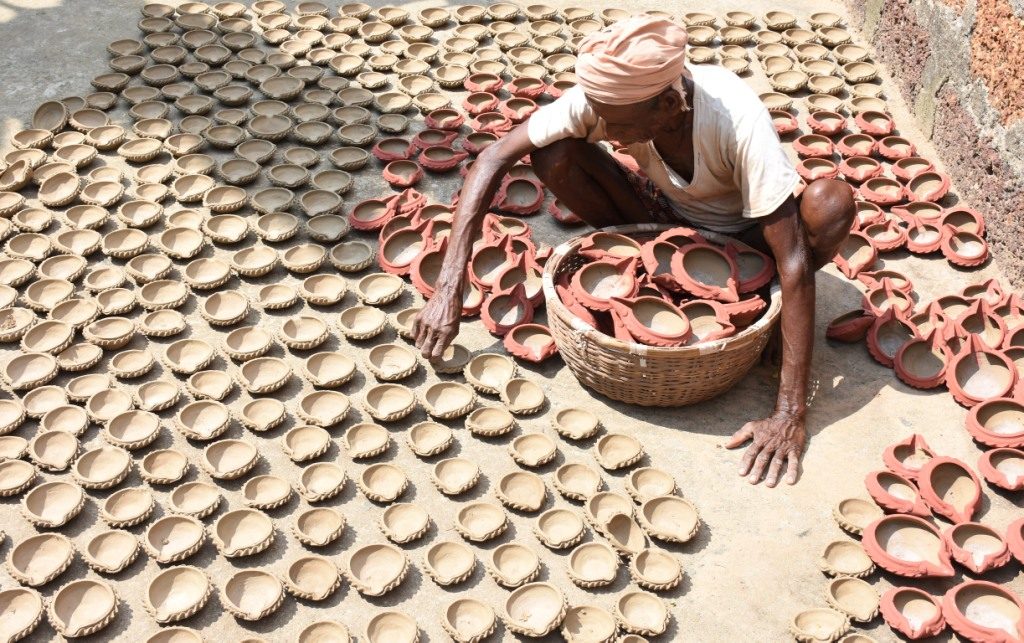Artisans, who were previously engaged only in making earthen lamps, are earning five times more by crafting terracotta and designer lamps
BHUBANESWAR: Earthen lamps are essential to almost all festivals celebrated across Odisha. Artisans are engaged in making the artifacts since time immemorial. However, they have to transform their craft continually in order to adapt to changing times.
As Diwali looms, lamps face stiff competition from electric lights and other home decor items. Nevertheless, earthen lamps are still sold aplenty due to their timeless charm. This year, potters have come up with designer lamps to allure buyers.
Binod Rana, a potter from Sambalpur, said, “My family which consists of 10 members is working on diyas for 10 years now. I earned a profit of Rs 50,000 last year. I hope it goes up a notch this year. Earthen lamps are still relevant because of people’s respect for tradition. It is the bona fide way of worshipping the Gods.”
A potter from Bargarh Jayadev Nayak has come along with 10 other groups to sell designer lamps in the city. He said, “We offer four-face and five-face earthen lamps. Apart from clay made earthen lamps, we offer designer diyas with colour. The rate of such diyas are Rs 20 per dozen and 1000 lamps for Rs 1200.”
Another artist from Sambalpur said, “Lamp making seems quite easy to commoners but it takes lots of patience and experience to prepare a beautiful pair. The process begins by filtering/sieving the mud. The mud is then mixed with water and kneaded thoroughly to gain the required consistency of the clay. After preparation, the essential quantity of clay necessary for making lamps is taken and the remaining clay is covered with the wet jute bag to retain moisture.”
He said, “Later, a lump of clay is put on the wheel and the wheel is turned. Then by applying pressure, the clay is forced to set in the centre of the wheel. Then the mound is pinched on the top centre using thumb finger and by taking the support of the left hand the shaping of the clay is done.”
“Once the required shape of diya is acquired, it is removed from the rest of the clay lump by using a needle that is attached to bamboo stick. It is the trickiest and challenging part of separating the shaped diya from the remaining lump. After that they are dried under direct sunlight. Once it is dried in sunlight it is fired in the kiln at 800 degree Celsius. After the firing of clay diya, it is allowed over night to cool down completely. Then as per the demand some diyas are coloured and some are retained plain and sold,” he added.
